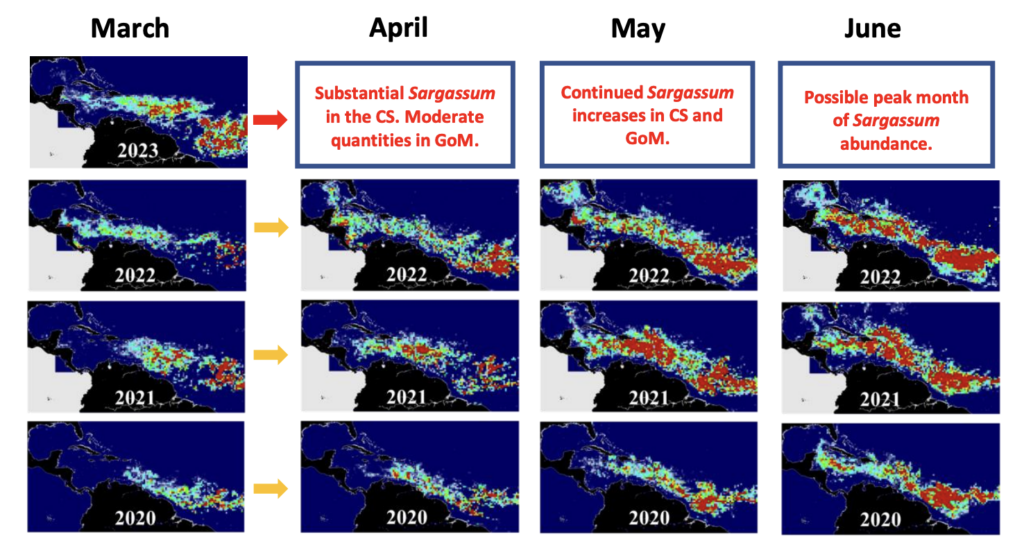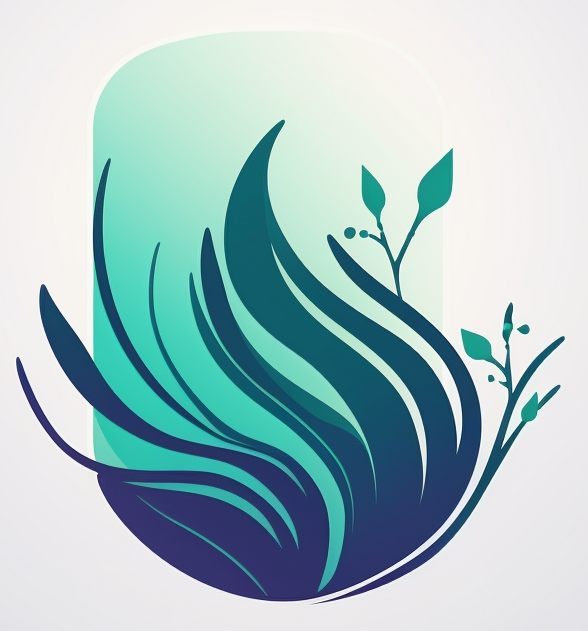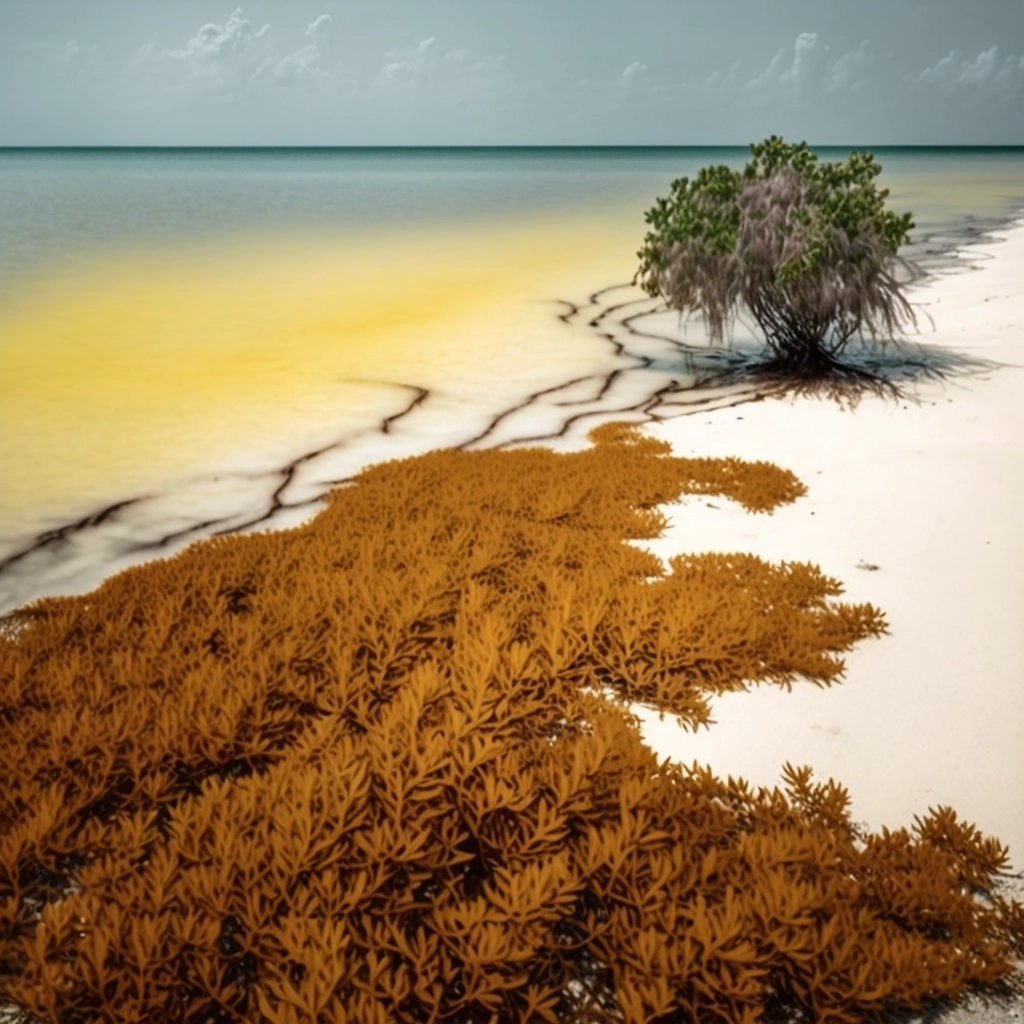Sargassum is a brown seaweed that forms large floating mats in the ocean, particularly in the Sargasso Sea, located in the Atlantic Ocean. In recent years, there has been a significant increase in the amount of sargassum washing up on beaches in the Gulf of Mexico, including the Gulf coast of the United States. While sargassum has many ecological benefits, such as providing a habitat for various marine life, its proliferation can negatively impact the economy and aquatic life in the region. In this blog post, we will discuss the impacts of sargassum on the economic tourism industry and aquatic life and explore alternative methods to harvest, sink, or any other ways to avoid impact on local economies on the Gulf Coast of the United States.

Impacts of Sargassum on the Economic Tourism Industry
Sargassum has become a major concern for the tourism industry along the Gulf Coast of the United States. When sargassum washes up on the beach, it can create an unpleasant odor and unsightly appearance, deterring tourists from visiting the area. Furthermore, sargassum can make it difficult for tourists to swim, fish, or engage in other water activities.
The economic impact of sargassum on the tourism industry can be significant. In 2018, the Caribbean Tourism Organization estimated that the cost of sargassum to the tourism industry in the Caribbean could be as high as $1 billion per year. Similarly, in 2019, the state of Quintana Roo in Mexico estimated that the cost of sargassum to the tourism industry in the region could be as high as $300 million per year.
Aquatic Life Impact
While sargassum provides a habitat for a variety of marine life, its proliferation can have negative impacts on aquatic ecosystems. When sargassum washes up on beaches, it can smother sea turtle nests, leading to declining sea turtle populations. Additionally, sargassum can make it difficult for marine animals, such as dolphins and whales, to navigate through the water, leading to entanglement and death.
Sargassum can also have negative impacts on the health of coral reefs. When sargassum grows too close to coral reefs, it can block sunlight, leading to coral bleaching and the death of coral colonies. Furthermore, when sargassum decomposes, it can release nutrients into the water, leading to the proliferation of harmful algal blooms.
Alternative Methods to Harvest, Sink, or Avoid Impacts to Local Economies
To mitigate the negative impacts of sargassum on the economy and aquatic life in the Gulf Coast region, several alternative methods can be employed.
One method is to harvest sargassum before it washes up on the beach. This can be done using boats equipped with specialized nets to collect the seaweed before it reaches the shore. The harvested sargassum can be used for various purposes, such as fertilizer or animal feed. However, this method can be expensive and impractical in all areas.
Another method is to sink the sargassum offshore. This can be done by using heavy machinery to load the seaweed onto barges and transport it to deeper waters where it can be safely deposited. This method can help to prevent sargassum from washing up on beaches, but it may not be feasible in all areas.
A third method is to use biological controls to prevent the proliferation of sargassum. This can be done by introducing predators or competitors that can feed on or outcompete sargassum. However, this method can be risky and may have unintended consequences.
Finally, communities can explore alternative uses for sargassum that can provide economic benefits while mitigating its negative impacts. For example, sargassum can be used as a raw material for the production of biofuels or as a source of food for humans. Additionally, communities can develop ecotourism programs that focus on the unique marine life that sargassum supports, such as sea turtles and migratory fish.
Conclusion
Sargassum is a complex issue that requires a multifaceted approach to address its impacts on the economy and aquatic life in the Gulf Coast region. While sargassum has many ecological benefits, its proliferation can negatively impact the tourism industry, aquatic life, and the health of coral reefs. Alternative methods such as harvesting, sinking, or exploring new uses for sargassum can help to mitigate its negative impacts. Still, it will require collaboration and investment from communities, governments, and private stakeholders to implement these solutions effectively. As we continue to face the challenge of sargassum proliferation, it is essential to balance the economic benefits of the tourism industry with the preservation of our aquatic ecosystems and the long-term sustainability of our planet.

